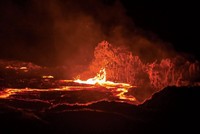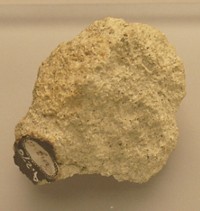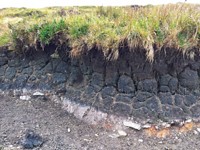Advertisement
Grab your lab coat. Let's get started
Welcome!
Welcome!
Create an account below to get 6 C&EN articles per month, receive newsletters and more - all free.
It seems this is your first time logging in online. Please enter the following information to continue.
As an ACS member you automatically get access to this site. All we need is few more details to create your reading experience.
Not you? Sign in with a different account.
Not you? Sign in with a different account.
ERROR 1
ERROR 1
ERROR 2
ERROR 2
ERROR 2
ERROR 2
ERROR 2
Password and Confirm password must match.
If you have an ACS member number, please enter it here so we can link this account to your membership. (optional)
ERROR 2
ACS values your privacy. By submitting your information, you are gaining access to C&EN and subscribing to our weekly newsletter. We use the information you provide to make your reading experience better, and we will never sell your data to third party members.
Synthesis
Chemists discovered new compounds at an exponential rate over the past two centuries
Computational study maps exploration of chemical space since 1800
by Sam Lemonick
June 19, 2019
| A version of this story appeared in
Volume 97, Issue 25

Scientists don’t know the limits of chemical space—the collection of all possible molecules—but a new analysis concludes chemists have discovered new compounds in that space at an exponential rate over the past 200 years (Proc. Nat. Acad. Sci. 2019, DOI: 10.1073/pnas.1816039116).
Guillermo Restrepo of the Max Planck Institute for Mathematics in the Sciences and colleagues used the Reaxys database to generate a list of more than 14 million compounds reported in scientific journals and patents between 1800 and 2015. Plotting the number of molecules reported each year revealed that new compound discoveries grew 4.4% annually.
The paper “provides what is bound to be a useful historical tool,” says Ronald Brashear, director of the Donald F. and Mildred Topp Othmer Library of Chemical History at the Science History Institute. Brashear says this computational approach to history is a valuable complement to other methods used by historians.
In addition to observing the overall trend, Restrepo’s team made conclusions about some of the finer details of chemical discovery. They divided the 215-year span into three eras based on the pace of discovery and the types of compounds discovered each year. They classified the era from 1800 to 1860 as a proto-organic period, during which metal-containing compounds made up a higher proportion of new molecules compared with any other time. This period also saw the biggest variance in the number of compounds discovered from year to year.
That variability changed in 1860, thanks to the adoption of valence and structural theories of chemistry, the researchers say. The pace of discovery became more regular from one year to the next, which Restrepo attributes to a change from an exploratory mode in chemistry to a more focused search. During this organic regime, carbon- and hydrogen-containing compounds began to dominate new discoveries, crossing the 90% mark in about 1880 and staying above that threshold ever since. The researchers found a corresponding drop in the number of metal-containing compounds.
The third era, which they named the organometallic regime, began in 1980 and continues today. During this modern era, there’s been a revival in the discovery of metal-containing compounds, and the rate of discovery has had even less annual variance than in previous eras.
Chemical discovery did take two large dips over the past two centuries during the two world wars. Restrepo says his team is the first to quantify the effect of war on chemistry. In both instances, the pace of discovery dropped precipitously but recovered to its original pace within five years after the war.
While the researchers were able to answer some questions about how chemists work—two-substrate reactions are most common, and almost all reactions combine a well-known reagent with one lesser known—Restrepo says the data aren’t clean enough to make predictions about the pace of discovery in the future or the number of molecules we might eventually find.
CORRECTION
This story was updated on June 21, 2019, to correct Guillermo Restrepo's affiliation. His main affiliation is the Max Planck Institute for Mathematics in the Sciences, not Leipzig University.





Join the conversation
Contact the reporter
Submit a Letter to the Editor for publication
Engage with us on Twitter